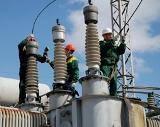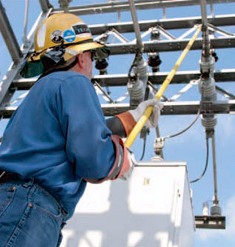The main operational errors of personnel when performing operational switches, their prevention
 Operational errors of personnel who maintain electrical installations are one of the main causes of technological disruptions and accidents. In the training of the operational personnel, as well as in the process of the personnel's work, the main task is to prevent the occurrence of negative situations as a result of operational errors of the personnel made in the process of carrying out operational switching. Let's look at the main operational mistakes of the staff and the measures aimed at their prevention.
Operational errors of personnel who maintain electrical installations are one of the main causes of technological disruptions and accidents. In the training of the operational personnel, as well as in the process of the personnel's work, the main task is to prevent the occurrence of negative situations as a result of operational errors of the personnel made in the process of carrying out operational switching. Let's look at the main operational mistakes of the staff and the measures aimed at their prevention.
One of the most frequent mistakes made by the staff is the incorrectly selected connection and, accordingly, the switching device. For example, in accordance with the switching form, it is necessary to perform the operation of opening the line disconnector of the connection «Line 1».At the same time, the employee performing operational switching, without making sure of the correctness of the selected connection and the switching device, turns off the line disconnector of the «Line 2» connection under load.
The tripping of the disconnector under load is accompanied by an electric arc. In this case, the worker performing the operation may be electrocuted, exposed to the thermal effects of an electric arc. The switching device itself is damaged, and the occurrence of a phase-to-phase short circuit can, in turn, lead to damage to other elements of the equipment of this connection.
In addition to the wrongly selected switching device, the wrong choice of the handle of the grounding devices is also possible. For example, for repairs, it is necessary to remove the connection switch. The outgoing power line of this connection has a bi-directional supply, while there is no need to remove the voltage from the opposite side. The operator, instead of connecting the fixed earth blades of the line disconnector to the switch, connects the SZN to the line to the operating voltage. This leads to a three-phase short circuit with all the subsequent consequences.
The main measure aimed at preventing the aforementioned errors is the use of electromagnetic blocking. The main task of the electromagnetic blocking is to prevent the work of the operating personnel from making a wrong operation when performing operations with switching devices (disconnectors, fixed earthing knives).
The electromagnetic interlock is designed in such a way that certain conditions must be met in order to perform a certain operation.For example, to turn on the disconnector, the open position of the switch of this connection, as well as the earthing devices of this connection, is mandatory. If the specified conditions are not met, an electromagnetic interlock blocks the operation of the switching device.
Another measure aimed at preventing operational errors is the availability and compliance with the requirements and the actual names of switching devices sending equipment nameplates. The elements must be kept clean and clearly visible to the operating personnel. At night or indoors, sufficient lighting must be provided at the workplace.
Despite the presence of electromagnetic blocking, the service personnel must be extremely careful when choosing a switching device and must take additional safety measures (checking the absence of voltage, matching the circuit of the switchgear, obtaining confirmation of the removal of voltage from the line) , as in some cases electromagnetic blocking cannot guarantee error prevention.
For example, if the stationary grounding blades are rotated to the side of a line that is actually live, electromagnetic blocking will not prevent this operation from being performed. In this case, it is necessary to check the absence of voltage in the disconnector in the direction of the line with a voltage indicator, previously checked for operability.
If the substation has complex protections, then when performing operational switching with the need to perform operations with these protections, operating personnel often make mistakes that can lead to various negative consequences.
For example, at 110 kV substations, mistakes are most often made when performing operations in the bus differential protection scheme. For example, when the connection is put into operation, due to the discrepancy between the actual position of the bus disconnector and the fixed current circuits of this connection in the DZSH scheme, a wrong disconnection of the 110 kV system(s) occurs.
In order to prevent the occurrence of operational errors when performing operations with switching protective devices and automatic devices, it is necessary to know their principle of operation and carry out operations in strict accordance with the instructions for their operational maintenance.
It should also be noted that one of the most common causes of operational errors is errors in the switching forms. As a rule, standard switching forms are prepared to perform complex switching operations. In addition, the shift forms must be checked by the worker who will perform the shift, as well as by the worker who controls the shift data, before directly performing the shift. In the absence of a supervising person, the correctness of drawing up the switching forms is checked by the senior operational staff (duty dispatcher, senior duty officer).

